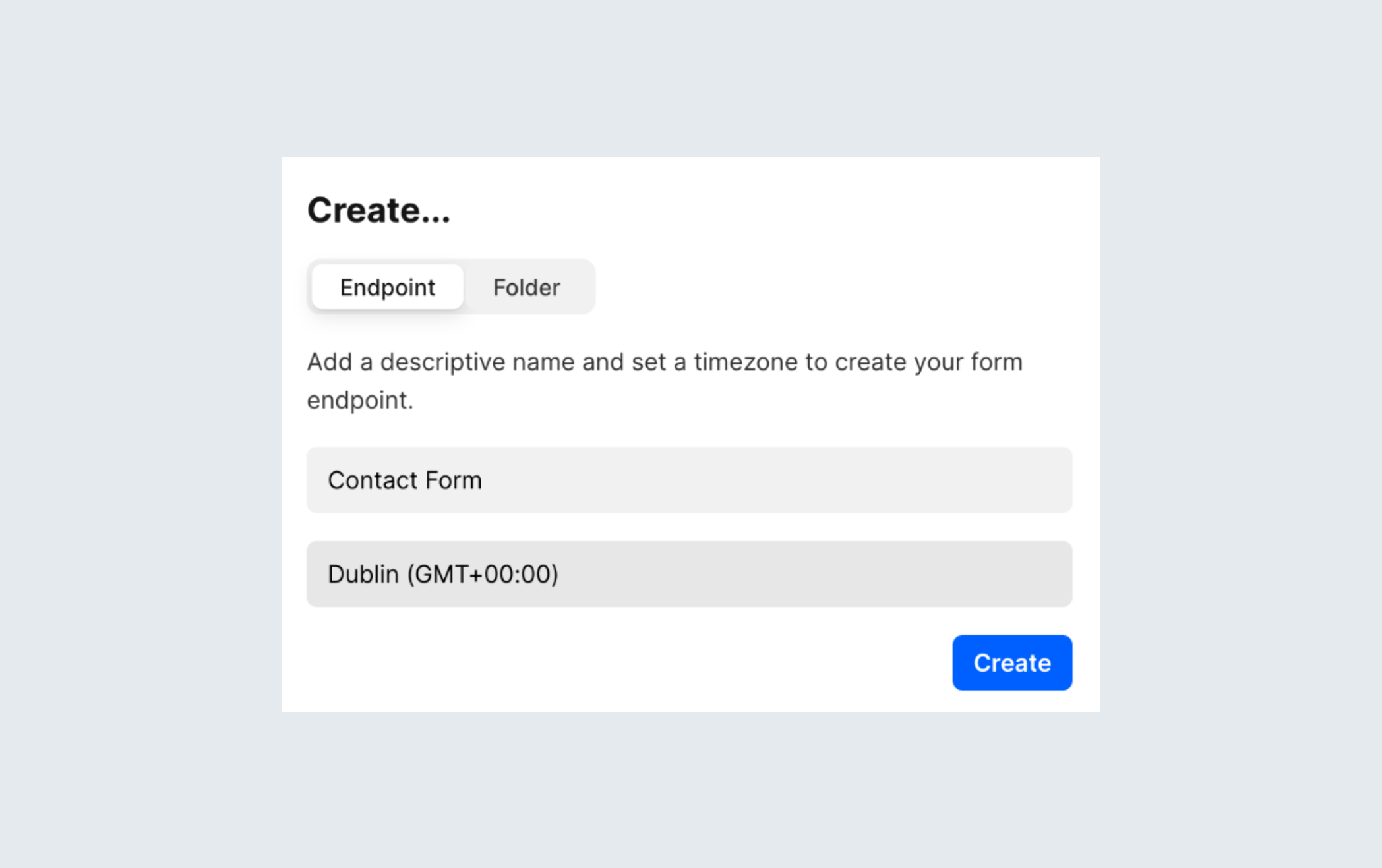# Basic Installation
Getform is the perfect solution for static sites that need a form backend and works anywhere HTML forms can be rendered.
# Basic Form Installation
To start using Getform to power your web forms, you'll need the following:
- A Getform account
- An HTML Form
- A unique form endpoint (generated by Getform)
# Step 1 - Creating a simple HTML Form
In order to use Getform, you're going to need an HTML form. If you don't already have one, you can start with the following example:
<form action="#" method="POST">
<input type="text" name="name">
<input type="email" name="email">
<input type="text" name="message">
<button type="submit">Send</button>
</form>
The action="#" determines where submitted data will be posted for processing.
# Step 2 - Creating a new form endpoint on Getform
After creating and verifying your Getform account, you can click to Create button from the top left of your dashboard to create a new form endpoint. Simply name your form, select a timezone in which your submissions will be displayed and click "Create".

IMPORTANT
- You can set a custom redirect URL only if you have a premium plan. Forms of free plan holder will be redirected to default thank you page https://getform.io/thank-you (opens new window) upon successful submission.
- If you are a free plan holder, you or your form submitters can submit to your Getform endpoint once every minute because API Rate Limiting exists. This limit doesn't exist for premium plan holders.
# Step 3 - Completing the Basic installation
After creating an endpoint, select the form you have created on your dashboard and head over to the "Settings" > "Setup" tab to simply copy/paste the URL endpoint into your form's action attribute. If you used the example form above, it should now look like this:
<form action="https://getform.io/f/{your-form-endpoint}" method="POST">
<input type="text" name="name">
<input type="email" name="email">
<input type="text" name="message">
<button type="submit">Send</button>
</form>
TIPS
Every form input field you added to your form must have the
nameattribute with a unique name.If you want to post your data using JavaScript, you should add a content type to your form tag. Supported content types are
"Content-Type: json","Content-Type: formdata"and"Content-Type: x-www-form-urlencoded"If you want to get a response message as JSON, then you must set the
HTTP Accept Headertoapplication/json.
And that's it! You're all set to collect submissions from your endpoint.
